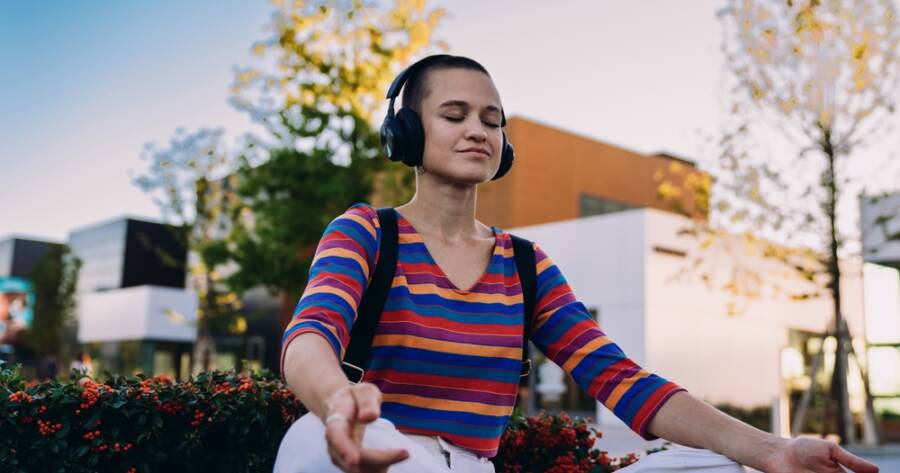In a world full of stress and noise, people are turning to sound in a new way—not just for music, but for healing. Binaural beats and sound therapy have gained popularity as tools to calm the mind and reset the nervous system. But how much of the buzz is backed by science? From meditation tracks to sleep apps, this form of “brainwave entrainment” is now part of many wellness routines. Understand whether it truly delivers a sense of calm—or if it’s just wishful listening.
What Are Binaural Beats?
Binaural beats occur when two tones of slightly different frequencies are played in each ear. Your brain picks up the difference between the two tones and creates a third perceived tone—a kind of internal rhythm. For example, if one ear hears a tone at 200 Hz and the other hears 210 Hz, your brain “hears” a 10 Hz beat.
That 10 Hz rhythm is thought to influence your brainwaves. Depending on the frequency, binaural beats can guide your brain into different states—like relaxation, focus, or even deep sleep. This process is known as brainwave entrainment, and it forms the foundation of many sound healing practices.
The Nervous System and Brainwave States
Your brain naturally cycles through different brainwave states throughout the day. These include:
- Beta waves (13–30 Hz): Active thinking and alertness
- Alpha waves (8–12 Hz): Calm focus, often during meditation
- Theta waves (4–7 Hz): Light sleep, creativity, and daydreaming
- Delta waves (0.5–3 Hz): Deep sleep and restoration
When you’re stressed or anxious, your brain often gets stuck in high-beta activity. Binaural beats in the alpha and theta ranges are thought to help shift you into a more relaxed state. This change can slow heart rate, lower blood pressure, and reduce cortisol, all of which support a calm nervous system.
Some research supports this idea. Studies have shown that listening to binaural beats may increase alpha brainwave activity, improve sleep quality, and reduce stress levels in certain populations. However, results vary, and not everyone experiences the same benefits.
Tools and Platforms That Use Binaural Beats
The rise of digital wellness has made binaural beats more accessible than ever. Popular meditation and sleep apps now include tracks labeled for focus, deep sleep, or stress relief. These tracks usually require headphones to work properly, since each ear must receive a different frequency.
Beyond apps, sound healing practitioners often combine binaural beats with traditional tools like singing bowls, gongs, and tuning forks in live sessions. These sound baths aim to surround the body with healing vibrations that influence the mind and nervous system in gentle ways.
Some devices also offer guided breathwork with embedded sound frequencies designed to sync with your breath and brainwaves. The goal is the same: relaxation through rhythm and sound.
Do They Really Work?
The answer is: it depends. Some people report immediate calm after listening to binaural beats, while others don’t notice much at all. Like many wellness tools, personal experience varies.
Here’s what may influence the effects:
- Consistency: Binaural beats often work best when used regularly over time. A single 10-minute session may help in the moment, but deeper changes come from repeated use.
- Listening environment: Quiet surroundings and comfortable seating can help you absorb the sound without distractions.
- Individual brain chemistry: Each person’s nervous system responds differently to sound. People who are more sensitive to auditory stimuli may benefit more from this kind of therapy.
Although some studies are promising, more large-scale research is needed before we can call it a proven medical solution. Still, it’s a low-risk strategy with a growing base of users who swear by it for anxiety, sleep, and focus.
When Sound Becomes a Soothing Strategy
In our fast-paced lives, finding moments of calm is more important than ever. Binaural beats offer a simple, tech-friendly way to tap into the power of sound for nervous system support. While not a magic fix, they may help reduce stress, ease mental fatigue, and even promote better sleep when used with intention.
Whether you’re curious about meditation or looking to unwind before bed, sound healing can be a gentle—and possibly powerful—tool in your wellness toolkit. Sometimes, the right rhythm really can change your state of mind.
